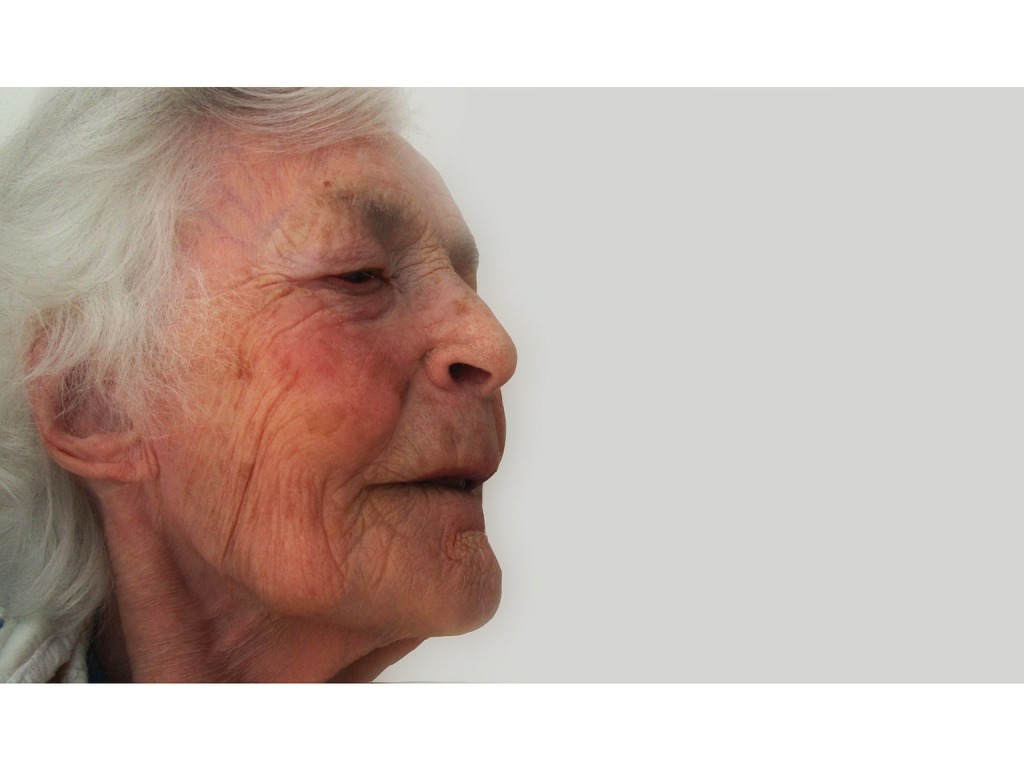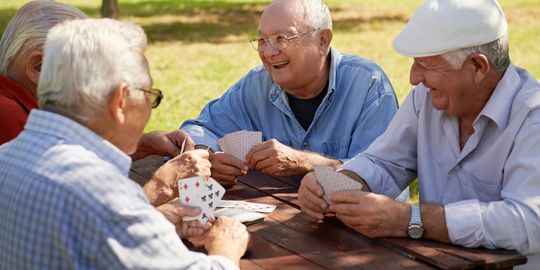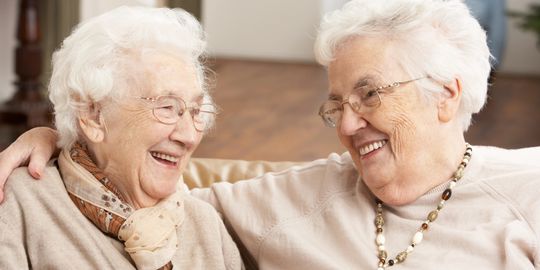Key points pertaining to the transitional life phase of family caregiver recovery
“My friends want me to go out with them, I need to find a job, and my home is a disaster. It’s been 6 months since my partner passed on. I was so busy taking care of him, lots of things just didn’t get done. I’m far behind on home maintenance, car maintenance, my own doctor’s appointments and tests, managing what’s left of our money, and more. I have lost my purpose in life and I am overwhelmed by the number of things that need to be done to get back to normal, whatever that is. But I don’t seem to have my strength back yet.” –a recovering family caregiver
This story of life after her partner passed on might have been my story after my Dad passed. It’s a story I hear over and over, no matter what the friendship or family relationship was between caregiver and the loved one needing care. In addition to their grief, family caregivers often need a period of recovery after their caregiving responsibilities are done. Not only are they grieving, but they also need to repair their lives and often their well-being after 6 months, 6 years, or 16 years of selflessly putting their loved one’s needs first.
Caregiver recovery is a transitional life phase, a little like Empty Nest Syndrome is a transition for parents. It begins when a loved one simply doesn’t need a high degree of attention, assistance, advocacy, and supervision any longer. The loved one may have recovered from an intense health crisis, as my husband recovered from open heart surgery. Or may pass on, as my Dad did after living with us for 6 years. This transitional life phase is especially trying for family caregivers who are depleted and have little resilience left after long-term caring for a loved one with debilitating medical, cognitive, mental health, or mobility issues. Even though many family caregivers see the opportunity to care for a loved one as a blessing, 21 percent of family caregivers in the United States feel that caregiving negatively impacted their physical, emotional, and/or spiritual health (The National Alliance for Caregiving (NAC) and the AARP Public Policy Institute (AARP), 2015).
After family caregiving, what follows is an opportunity for healing. As I listened to former family caregivers, read many caregiver support websites and blogs by former family caregivers, reviewed healthcare literature, and reflected upon my own experience as a family caregiver for my husband, mother, and father, I felt compelled to develop the undefined concept of recovery from family caregiving. Although many caregiver blogs write about life after caregiving, few healthcare professionals have researched or written about the concept. It is a process, one that is little known by healthcare professionals, seldom explained to caregivers, and generally handled alone by isolated family caregivers often depleted by their service to their loved ones.
Family caregiver recovery is a transitional life phase after a family or informal caregiver’s service is no longer needed, due to the care recipient’s death, remission, or recovery. I offer this definition using what I learned from my clients, through my personal experience, and from reviewing the literature about family caregiving. Little research has been done on former family caregivers, but four caregiving challenges likely extend into the transitional life phase of caregiver recovery. They are family caregiving risks (physical, emotional, spiritual and socioeconomic), compassion fatigue, major life changes, and relationships.
Each caregiver’s experience is unique, and may include characteristics of one or more of these challenges. While as a concept caregiver recovery is not defined in the literature, these challenges have been documented by various healthcare professionals. The various characteristics of these challenges provide further insight into the transitional life phase of recovering from caregiving.
Family Caregiver Recovery Challenge #1: Family Caregiving Risks
Family Caregiving Risks are the physical, emotional, spiritual and socioeconomic risk factors often experienced while caring for a loved one that continue to affect the former caregiver’s well-being and quality of life. These risks are sometimes referred to as caregiver burdens. Although many of these risk have studied in current family caregivers, it seems unlikely that these risks immediately end when the caregiver’s responsibilities to their loved one end.
Emotional difficulty as a result of family caregiving was reported by 44 percent of those surveyed by the U.S. Department of Health & Human Services (Spillman, Wolff, Freedman, & Kasper, 2014). They are a common theme in family caregiver research. (National Consensus Project (NCP) for Quality Palliative Care, 2018; The Commonwealth Fund (CF), The New York Times (NYT), & Harvard T.H. Chan School of Public Health (HTHCSPH), 2018). Wingham, Frost, and Britten (2017) list the emotional impacts of caregiving as fear for the future, a sense of hopelessness, reduced resilience, and feelings of exclusion, by both the cared-for person and by health professionals. The U.S. Department of Health & Human Services documents depression and anxiety in family caregivers (Spillman, et al., 2014). Kamel et al. document stress and strain as caregiver risks. (Kamal, Covvey, Dashputre, Ghosh, Shah, Bhosle, & Zacker, 2017) Family caregivers sometimes experience mental health problems. (CF, NYT, & HTHCSPH, 2018; Oldenkamp, Hagedoorn, Slaets, Stolk, Wittek, & Smidt, 2016).

“Ignoring one’s own health” is a common risk of family caregiving. (Wingham, et al., 2017, p.1). Physical manifestations may include pain, impaired sleep, weakness in upper or lower extremities, low energy or exhaustion to the point of limiting activities (Spillman, et al., 2014) and fatigue (Kamal, et al. 2017). Caregiver problems with physical health have been noted by Oldenkamp, et al., 2016; Potier, Degryse, & de Saint-Hubert, 2017; CF, NYT, & HTHCSPH, 2018, and Spillman, et al., 2014). Over 20 percent of family caregivers reported physical health issues they related to their work as a family caregiver (Spillman, et al., 2014).
Financial strain is another risk factor for family caregivers, reported by 22.5 percent of those surveyed (Spillman, et al., 2014). Risks related to financial concerns include:
- Job loss (NAC & AARP, 2015; CF, NYT, & HTHCSPH, 2018)
- Needing to change a job or have to work fewer hours (NAC & AARP, 2015; CF, NYT, & HTHCSPH, 2018)
- Work absenteeism (Kamal, et al., 2017; NAC & AARP, 2015)
- Needing to retire early (NAC & AARP, 2015)
- Loss of job benefits (NAC & AARP, 2015)
- Costs of care (Schneider, Abrams, Shah, Lewis and Shah, 2018)
Family caregivers often have less time for other life activities in addition to work, including their own healthcare appointments (Wingham, et al., 2017), personal exercise, and religious or spiritual communities. In Informal Caregiving for Older Americans: An Analysis of the 2011 National Study of Caregiving, family caregivers reported having more to do than they can handle and not having time for themselves. (Spillman, et al., 2014). Daily activity problems are reported by family caregivers (Oldenkamp, et al., 2016). Kamal et al. (2017) documented these four demands on family caregivers that create time constraints for other activities.
- Travel from caregiver’s home to care recipient’s location
- Attending loved one’s treatment appointments
- Care activities for the care recipient, assuming the care recipient’s family responsibilities, coordinating healthcare, and increased household activities
- Inability to commit to activities, due to frequent urgent home care treatments or emergency hospital related activities
Family Caregiver Recovery Challenge #2: Compassion Fatigue
Compassion fatigue is most often studied in nurses and other healthcare professionals. Given that family caregiving is often a 24/7 responsibility, it is not surprising that compassion fatigue is a challenge. The work of Lynch and Lobo (2012), Day and Anderson (2011), and Perry, Dalton, & Edwards (2010) recognizes the occurrence of compassion fatigue in family caregivers. Although I did not find any research on compassion fatigue in former caregivers, it is possible that former caregivers may still experience compassion fatigue. Anecdotally, some former caregivers have reported a need to take care of everyone and anyone, and others report that they feel incapable of extending themselves to help another.
Lynch and Lobo (2012) describe compassion fatigue as “physical, psychological, spiritual and social exhaustion in the family caregiver” resulting from “a care-giving relationship founded on empathy that potentially results in deep psychological response to stress.”
In their review of literature pertinent to compassion fatigue, Lombardo & Eyre (2011) list both physical and emotional signs of compassion fatigue. Physical manifestations of compassion fatigue may include headaches, digestive problems, muscle tension, sleep disturbances, including an inability to sleep, insomnia, or too much sleep, fatigue, and cardiac symptoms with chest pain/pressure, palpitations, or tachycardia. Potential emotional manifestations include mood swings, restlessness, irritability, oversensitivity, anxiety, excessive use of substances like nicotine, alcohol, or illicit drugs, depression, anger and resentment, loss of objectivity, memory issues, poor concentration, limited focus, and impaired judgment (Lombardo & Eyre, 2011).
Family Caregiver Recovery Challenge #3: Major life changes
Although I did not find any specific studies about the impact of change on former caregivers, Family Caregiver Risk factors often lead to essential change during the caregiving years. When family caregiving is over, further change is often necessary or at least desired. Some caregivers have told me that others expect them to ‘get back to normal.’ Others are restless to resume or begin life activities put on hold. Alaf Meleis, PhD, DrPS(hon), FAAN, LL, author of transitions theory, applies her theory to family caregivers and describes the manifestations of major life changes. People in transition may experience disruptions, disconnectedness, loss of familiarity, loss of support, and self-doubt related to skills and capacities. (Meleis, 2010)
Major life changes faced by some former family caregivers include
- Changing life purpose (Wingham, et al., 2017)
- A need to find new housing (anecdotal)
- Resuming work or finding a new job (CF, NYT, & HTHCSPH, 2018)
- Lifestyle changes from financial strain related to caregiving (Oldenkamp, et al., 2016; (NAC & AARP, 2015; CF, NYT, & HTHCSPH, 2018)
- Lifestyle changes secondary to personal illness or injury experienced during caregiving (Oldenkamp, et al., 2016; NAC & AARP, 2015; CF, NYT, & HTHCSPH, 2018; Spillman, et al., 2014).
- Significant change to former family caregiver’s daily structure and schedule, as they no longer have a clear focus (their loved one) or the busy demands of family caregiving. (Kamal, et al., 2017).
The Holmes-Rahe Stress Inventory is a checklist helpful to recognize the major life changes a former caregiver is experiencing. It is available from the American Institute of Stress.
Family Caregiving Recovery Challenge #4: Relationships
Relationships with the care recipient, with family members, and with friends may change during and after an experience of family caregiving (Wingham, et al.,2017; Oldenkamp, et al., 2016).
Sometimes problems and difficulties occur in relationships as a result of family caregiving, and other relationship issues are well-documented in the bereavement literature. The difference between relationship challenges following bereavement to those associated with family caregiving were described by Wingham, et al. (2017). For months or years prior to the loss of a loved one, some family caregivers experience social isolation, feeling very alone as relationships disintegrate. Also, within families, changing roles during the caregiving years may continue to impact family relationships of former caregivers (Wingham, et al., 2017). Frequent conflicts among family members of caregivers is documented in Being Seriously Ill in America Today (CF, NYT, & HTHCSPH, 2018). Family caregivers face the dual challenges of family conflicts and little support due to social isolation during their caregiving years.
Encouragement for former family caregivers
It seems that many family caregivers quite successfully navigate the life transition after caregiving, although some say it took much longer than they expected. I encourage family caregivers to take time to heal from any burdens, traumas and challenges you experienced while caring for your loved one, including fatigue, depression, anxiety, and sleeplessness. After what healthcare professionals refer to as compassion fatigue, regain compassion and resilience. Release or repair relationships that became dysfunctional during your loved one’s illness or were neglected while you were busy being a caregiver. Accept and grow through the major life changes before you. You may accept these opportunities for healing, or you may allow your body, mind, and spirit to stagnate. It’s a choice point, and the choice is yours to make.
An appeal to caring professionals
By applying the challenges of family caregiving risks, compassion fatigue, major life changes, and impaired relationship to family caregivers, caring professionals have an enhanced understanding of what may happen when the family caregiving experience is over. These applications suggest many research questions, which I hope will be pursued in the near future.
In the meantime, I appeal to caring professionals to raise awareness to the transitional life phase that is Family Caregiver Recovery. Raise your own awareness to the unique challenges facing your clients recovering from family caregiving. Many former caregivers are trying to recover in isolation, without peer support from others to normalize the experience. Raise awareness in the caregivers and former caregivers you serve, that they may better understand this phase of life. Help them along their way!
References
The Commonwealth Fund (CF), The New York Times (NYT), & Harvard T.H. Chan School of Public Health (HTHCSPH). (2018, October). Being Seriously Ill In America Today. (Research report). Retrieved from https://cdn1.sph.harvard.edu/wp-content/uploads/sites/94/2018/10/CMWF-NYT-HSPH-Seriously-Ill-Poll-Report.pdf
Day, J.R., & Anderson, R.A. (2011). Compassion fatigue: An application of the concept to informal caregivers of family members with dementia. Nursing Research and Practice, 408024. https://doi.org/10.1155/2011/408024
Galiatsatos, P., Gurley, A., & Hale, W. D. (2017) Policy and advocacy for informal caregivers: How state policy influenced a community initiative. Journal of Public Health Policy, 38, 503-508. https://doi.org/10.1057/s41271-017-0084-x
Kamal, K., Covvey, J., Dashputre, A., Ghosh, S., Shah, S., Bhosle, M. & Zacker, C. (2017). A systematic review of the effect of cancer treatment on work productivity of patients and caregivers. Journal of Managed Care and Specialty Pharmacy, 23(2), 136-162.
Lombardo, B., & Eyre, C. (2011). Compassion Fatigue: A Nurse’s Primer. Online Journal of Issues in Nursing, 16(1), 3.
Lynch, S.H., & Lobo, M.L. (2012). Compassion fatigue in family caregivers: A Wilsonian concept analysis. Journal of Advanced Nursing, 68, 2125-2134. https://doi.org/10.1111/j.1365-2648.2012.05985.x
National Alliance for Caregiving (NAC) and the AARP Public Policy Institute. (2015). Caregiving in the U.S. 2015 – Focused Look at Caregivers of Adults Age 50+ [Research Report]. Retrieved from https://www.aarp.org/content/dam/aarp/ppi/2015/caregivers-of-older-adults-focused-look.pdf
National Consensus Project (NCP) for Quality Palliative Care. (2018). Appendix 1 of Clinical practice guidelines for quality palliative care (4th ed.). Richmond, VA: National Coalition for Hospice and Palliative Care. Retrieved from https://www.nationalcoalitionhpc.org/ncp
Oldenkamp, M., Hagedoorn, M., Slaets, J., Stolk, R., Wittek, R., & Smidt, N. (2016). Subjective burden among spousal and adult-child informal caregivers of older adults: Results from a longitudinal cohort study. BMC Geriatrics, 16(208). https://doi.org/10.1186/s12877-016-0387-y
Perry, B., Dalton, J. E., & Edwards, M. (2010). Family caregivers’ compassion fatigue in long-term facilities. Nursing Older People, 22(4), 26-31. https://doi.org/10.7748/nop2010.05.22.4.26.c7734
Potier, F., Degryse, J.M. & de Saint-Hubert, M. (2017) Impact of caregiving for older people and pro-inflammatory biomarkers among caregivers: a systematic review. Aging Clinical & Experimental Research, 30(2), 119-132. https://doi.org/10.1007/s40520-017-0765-0
Schneider, E.C., Abrams, M., Shah, A., Lewis, C & and Shah, T. (2018). Healthcare in America: The Experience of People with Serious Illness. Retrieved 11/5/18 from http://features.commonwealthfund.org/health-care-in-america.
University of Pennsylvania School of Nursing. (2018). Profile, Afaf I. Meleis, PhD, DrPS(hon), FAAN, LL. Retrieved from https://www.nursing.upenn.edu/live/profiles/69-afaf-i-meleis
Spillman, B., Wolff, J., Freedman, V., & Kasper, J. (2014). Informal caregiving for older Americans: An analysis of the 2011 National Study of Caregiving. Washington, D.C.: Office of the Assistant Secretary for Planning and Evaluation, U.S. Department of Health and Human Services. Retrieved from https://aspe.hhs.gov/report/informal-caregiving-older-americans-analysis-2011-national-study-caregiving
Wingham, J., Frost, J., & Britten, N. (2017). Behind the smile: Qualitative study of caregivers’ anguish and management responses while caring for someone living with heart failure. BMJ Open, 7(7). https://doi.org/10.1136/bmjopen-2016-014126
Statistics and references updated 2/6/2019







One Comment
Comments are closed.